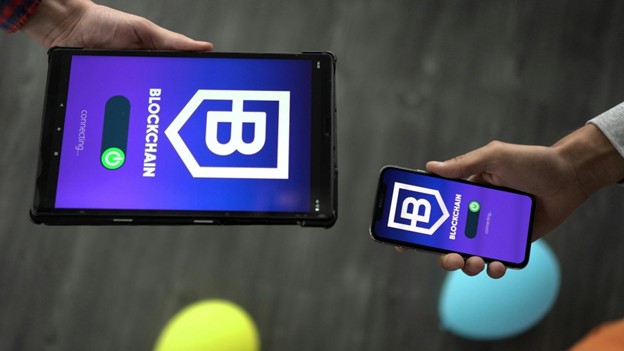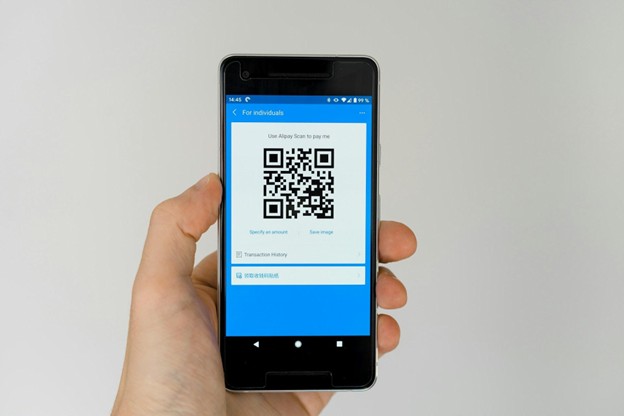Climate change may be one of the biggest issues the world is facing right now, but so is another crucial thing: counterfeiting. Globally, it has cost businesses all over the world over $500 billion annually, affecting nearly every industry from fashion to pharmaceuticals. Besides financial losses, fake goods damage a company’s reputation, erode customer trust, and pose risks to consumer safety. Thankfully, brand protection strategies exist.
Businesses must adopt these strategies as a proactive measure against counterfeiting. Safeguarding their intellectual property, products, and reputation has never been more vital. These strategies involve a combination of legal, technological, and operational solutions designed to detect, prevent, and mitigate counterfeiting.
Of course, the most effective strategy is a multi-layered approach, combining physical product security, monitoring, and consumer education. At the highest layer, technology plays a critical role in enabling businesses to stay ahead of counterfeiters. As a pioneer in brand protection technologies, AlpVision is ready to answer the challenge of providing brands with the ultimate protection strategies with our multi-layered anti-counterfeit measures.
Learn more about how brand protection strategies work and how AlpVision’s solutions can empower businesses to defend their products and build trust with consumers.
The Challenges of Brand Protection
Counterfeiters seem to be one step ahead of businesses in creating fakes that flood the market. Their operations are more sophisticated than ever, especially now that online marketplaces are popping up by the dozen. They now use advanced tools to replicate packaging, labels, and even security features with alarming accuracy.
Further exacerbating the issue, not all e-commerce websites have tightened security over quality checks. With more and more people also using social media to buy and sell goods and services, unsuspecting customers have fallen prey to counterfeiters. The global nature of supply chains complicates detection; fake products can infiltrate distribution channels at multiple points.
A single method of protection, such as basic labeling or holograms, is no longer effective as a defense against counterfeiting. For example, even serialized labels, once a hallmark of product authenticity, can be copied using a a standard printer.
Therefore, a more holistic approach is required to combat counterfeiting. This approach integrates different layers of protection, which may include the following:
- Advanced authentication technologies: Using secure and covert security features to verify product authenticity
- Supply chain monitoring: Ensuring transparency and security across all stages of production and distribution
- Online monitoring platforms: Employing AI-powered services that scan online marketplaces and social media platforms to pinpoint, identify, and then remove fraudulent listings
- Consumer education: Helping buyers identify genuine products and avoid fakes
This type of strategy addresses counterfeiting at every level, from manufacturing to consumer interaction. Businesses cover all their bases and become better equipped to protect their goods, brands, and customers
Building a Robust Brand Protection Strategy
Businesses should build a strong brand protection strategy to safeguard their products, IP, and reputation. However, keep in mind that a single counterfeit protection measure cannot fix everything; it must be tailored to address various aspects of the supply chain.
Defining Objectives
Any effective brand protection strategy lies in setting clear and measurable objectives. Without objectives, any effort to combat counterfeiting may become fragmented and ineffective. By identifying specific targets, businesses create a focused approach that aligns with their unique challenges.
Consider the following objectives:
- Product authentication: Do you want your customers to easily verify your product’s originality? How to combine physical security features with digital tools to support them?
- Supply chain traceability: Is your business’ main concern with tracking products from manufacturing to retail shops? Do you need to identify vulnerabilities in the supply chain? Is transparency to maintain product integrity your priority?
- Consumer engagement: Are you concerned about educating customers on how to differentiate between genuine products from fakes? Is it important for your business to enhance their brand loyalty?
- Monitoring and enforcement: Is your business actively monitoring online and offline channels for fake goods? Do you want to conduct regular audits of e-commerce platforms and marketplaces?
- Industry collaboration: Does your business want to collaborate with other brands to strengthen overall anti-counterfeiting efforts? Are you keen on sharing intelligence and participating in industry-wide campaigns?
Establishing the objectives will streamline your counterfeit protection effort. It also ensures a thorough approach that addresses the issue from all aspects.
Choosing the Right Technologies
It’s easy to fall into the trap of welcoming all cutting-edge technologies for your business’ brand protection strategy. However, aligning the tools with the defined objectives of your strategy will work better. The right technology will address your business’ specific challenges.
Here are several brand protection technologies to consider.
Overt features
Overt features are visible security elements that can be easily identified by consumers, retailers, or inspectors. They’re designed to provide instant authenticity verification and are useful in high-traffic consumer environments. Examples of such features include holograms, security labels, UV markings, and QR codes. However, when these overt features are used on their own, they may not be entirely secure and still need an additional measure of protection.
Covert features
Meanwhile, covert features are hidden security elements. They’re not visible to the naked eye and are meant for internal or law enforcement verifications. They’re more difficult to counterfeit as they usually require special equipment to detect. Examples of the more well-known covert features are invisible ink, digital watermarks, and RFID tags.
Most businesses should already know the popular examples above. However, for a more in-depth insight into overt and covert features and their functionalities, this comprehensive list of solutions can be helpful.
Track-and-trace-systems
These systems enable businesses to monitor a product’s journey from production to sales where authenticity is guaranteed at every stage. They usually have real-time data for enhanced transparency and accountability across the supply chain.
Blockchain
Blockchain technology offers a decentralized and immutable ledger to track product information. It provides tamper-proof records of a product’s origin, transit, and originality. For high-value goods, this technology is particularly effective.
Technological capabilities
Whatever technology you and your business ultimately choose, an essential focus is their data retrieval and data analysis capabilities. The ability to quickly and accurately retrieve data is crucial for identifying fakes and responding to threats.
- The information retrieved: Product origin, batch numbers, or sales data—any data can be retrieved, but ensure your chosen system can provide you with actionable insights for your business needs.
- The retrieval speed: Speed is vital in detecting counterfeit goods before they can spread further in the market. Look for technologies that provide near-instant data retrieval, especially in places with high transaction volumes.
Carefully selecting technologies fitting your brand protection objectives will ensure strong data capabilities, which will create a more resilient defense against counterfeits.
Implementing a Multi-Layered Approach
Using more than one approach as a combined brand protection strategy can be highly beneficial to defend against counterfeiting. The benefit lies in the synergy between different tools and methods. When used together, they provide a stronger, more resilient system than any single technology could offer.
Leveraging different layers of protection will ensure counterfeiters face several solid roadblocks to create fakes. Businesses can then increase their chance of detection at various stages of the product life cycle.
For example, overt and covert features can be used together to provide the most effective brand protection. When you combine holograms and digital watermarks, the overt feature will serve as a quick, visible indicator of originality to consumers, while the digital watermark will track the product’s journey through a backend database.
AlpVision Solutions and Multi-Layered Protection
For businesses that want a multi-layered approach to protect their brand, AlpVision is here to help. AlpVision offers advanced anti-counterfeiting technologies designed to seamlessly integrate into your supply chain. With a focus on covert measures that are invisible and detectable on smartphones, there’s no need for specialized devices. Furthermore, AlpVision’s technology does not affect the product’s manufacturing; no changes are required.
Meanwhile, AlpVision’s mobile-based authentication, along with track-and-trace integration, offers a robust defense system. It can identify counterfeit goods easily anywhere in the supply chain. Combining technologies is AlpVision’s ultimate approach, aiming for detection and traceability that fit perfectly into a broader multi-layered protection framework.
Further examples of how AlpVision’s covert marker technology can be useful are to see how it works with blockchain and QR codes.
AlpVision and blockchain
(Photo credit: Unsplash)
Combine AlpVision’s covert markers with blockchain technology to generate a fixed record of product information. Each item’s authenticity can be verified at any point and the blockchain ledger forbids tampering with the tracking of each product from manufacture to retail.
AlpVision and QR codes
(Photo credit: Unsplash)
When AlpVision’s covert markers are paired with QR codes, consumers can use their smartphones to scan the product’s packaging and verify its authenticity in real-time. The QR code links to a digital database that shows detailed product information, including its origin and supply chain history.
The combined technologies at AlpVision’s disposal ensure that brands can detect fakes with little problem to offer a secure and user-friendly experience for both businesses and their customers.
Conclusion
Only a multi-layered approach to brand protection can efficiently combat the evolving threat of counterfeiting. Combining various technologies—covert markers, track-and-trace systems, blockchain, and others—will secure the product at every stage. Using AlpVision’s innovative solutions, including AlpVision Cryptoglyph® and AlpVision Fingerprint®, can enhance the product’s security and traceability. Work with AlpVision to build consumer trust and stay ahead of the counterfeiters.
Learn more about anti-counterfeiting measures from AlpVision and download the whitepaper Selecting an ANTI-COUNTERFEITING TECHNOLOGY.
Download your Whitepaper



